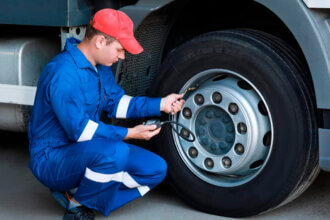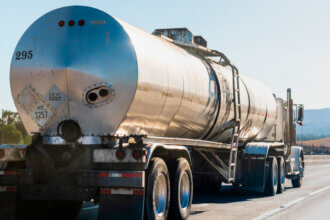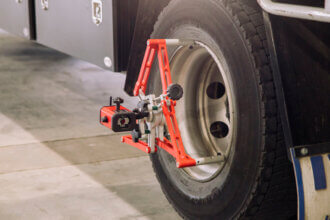The Right Semi-Truck Tire Pressure
Proper tire pressure is critically important for safe operation of commercial vehicles. Knowledge about the correct semi tire pressure helps truck drivers and fleet managers save on fuel costs, prevent premature tire wear, and avoid tire blowouts during trips.
What Is the Correct PSI for Semi Truck Tires?
The correct semi-truck tire pressure depends on many factors:
- The weight of the cargo being transported
- Tire size
- Weather conditions
- Manufacturer’s recommendations
However, most semi-trailer tires are recommended to be inflated to between 100 and 110 PSI.
Truck Weighing
To determine the correct pressure, the truck should be weighed on weighing equipment: each axle separately, as well as the complete trailer.
Then you need to compare the resulting total weight of each axle with the tire manufacturer’s recommendations. Particular attention should be paid to the weight that falls on each front axle tire.
If the maximum load capacity of a tire is less than the weight shown on the scale, you must select tires with a higher load capacity.
This can be achieved by using tires with a higher load index, increasing the load range, or by using larger tires.
Adjustments for Load and Temperature
It is important to adjust semi tire pressure depending on the load carried and the ambient temperature.
Heavier loads may require higher tire pressure, and adjustments may also be needed when driving in conditions of extremely high or low temperature.
Importance of Regular Semi Tire Pressure Checks
Ideally, tire pressure should be checked before each trip.
Tires can lose up to 2 pounds per square inch (PSI) per month due to natural air leakage, and temperature changes can also affect the pressure inside the tire.
For accurate measurements and air adjustments, drivers are advised to always have a pressure gauge with them.
Maintenance Beyond Commercial Truck Tire Pressure
In addition to maintaining the correct tire pressure, regular tire maintenance should include checks for wear, damage, and proper installation.
This comprehensive approach ensures that the tires are not only correctly inflated but also in good condition for safe and efficient operation.




